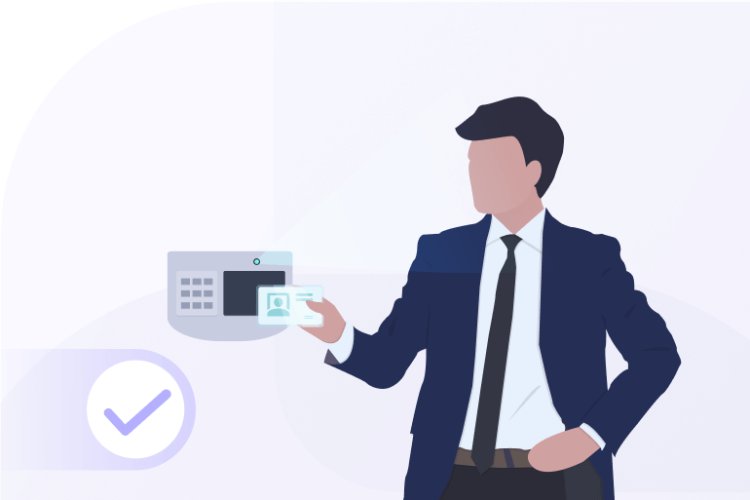Essential Features to Look for in Employee Attendance Tracking Software
Discover the key features to look for in employee attendance tracking software. Ensure accuracy, ease of use, and integration with payroll systems.
Share this Post to earn Money ( Upto ₹100 per 1000 Views )

In today’s fast-paced business environment, efficient management of employee attendance is crucial for maintaining productivity and ensuring compliance with labor laws. Employee attendance tracking software has become an indispensable tool for businesses, offering a streamlined solution to monitor attendance, manage time, and handle payroll. However, not all attendance tracking systems are created equal. To choose the right software for your organization, it’s essential to understand which features will provide the most value. This article outlines the key features to look for in employee attendance tracking software to ensure it meets your business needs.
1. Automated Time Tracking
Automated time tracking is one of the most fundamental features of modern attendance software. It eliminates the need for manual timekeeping, reducing errors and saving time. Look for software that offers real-time tracking and integrates seamlessly with other systems to provide accurate and up-to-date attendance records. Features such as automatic clock-in/out, shift scheduling, and break management ensure that all time-related data is captured without manual input.
2. Customizable Reporting
Customizable reporting is essential for analyzing attendance data and generating insightful reports. The software should allow you to create reports tailored to your specific needs, such as attendance trends, absenteeism, and overtime calculations. Look for options to export reports in various formats (e.g., PDF, Excel) and schedule automated report generation. This feature helps in tracking performance, making data-driven decisions, and ensuring compliance with company policies.
3. Integration Capabilities
For a smooth workflow, attendance tracking software should integrate seamlessly with other business systems, such as payroll, human resources (HR), and project management tools. Integration capabilities enable the software to sync attendance data with payroll systems for accurate wage calculations and with HR systems for up-to-date employee records. This reduces manual data entry, minimizes errors, and ensures consistency across various platforms.
4. Geolocation and Mobile Access
In today’s increasingly mobile work environment, having the ability to track attendance remotely is crucial. Look for software that offers mobile access and geolocation features. Mobile apps allow employees to clock in and out from their smartphones, while geolocation ensures that time entries are made from the designated work locations. This is particularly useful for organizations with remote teams, field workers, or multiple locations.
5. Leave and Absence Management
Effective leave and absence management is essential for maintaining workforce productivity. The software should include features for managing various types of leave, such as vacation, sick leave, and personal time off. Look for functionalities that allow employees to request leave, track leave balances, and automate leave approval workflows. This helps streamline the process, reduces administrative overhead, and ensures accurate record-keeping.
6. Compliance and Data Security
Compliance with labor laws and regulations is a critical aspect of attendance tracking. Choose software that includes features to ensure adherence to legal requirements, such as tracking work hours, overtime, and break times. Additionally, data security is paramount. The software should offer robust security measures, including encryption, user access controls, and regular backups, to protect sensitive employee information.
7. User-Friendly Interface
A user-friendly interface is vital for ensuring that both employees and administrators can easily navigate the software. The system should be intuitive, with clear menus and straightforward functionality. An easy-to-use interface reduces the learning curve for employees and HR personnel, promotes accurate data entry, and enhances overall efficiency.
8. Customizable Alerts and Notifications
Customizable alerts and notifications help keep employees and managers informed about important attendance-related events. Look for software that allows you to set up automatic notifications for occurrences such as missed clock-ins, upcoming shifts, or approval requests. This feature ensures timely communication and helps prevent attendance issues before they escalate.
9. Analytics and Insights
Advanced analytics and insights can provide valuable information on attendance patterns, employee performance, and potential issues. Look for software that offers analytical tools to track metrics such as absenteeism rates, punctuality, and overtime trends. These insights can help identify patterns, optimize scheduling, and make informed decisions to improve overall workforce management.
10. Scalability and Customization
As your business grows, your attendance tracking needs may evolve. Choose software that is scalable and customizable to accommodate changes in your organization. The ability to add new features, integrate with additional systems, and adjust settings as needed ensures that the software can adapt to your changing requirements.
Conclusion
Selecting the right employee attendance tracking software is a critical decision that can impact the efficiency of your HR processes and the overall productivity of your workforce. By focusing on essential features such as automated time tracking, customizable reporting, integration capabilities, and data security, you can find a solution that meets your organization's needs and supports its growth. Investing in a robust attendance tracking system will not only streamline operations but also provide valuable insights for better decision-making and improved employee management.















